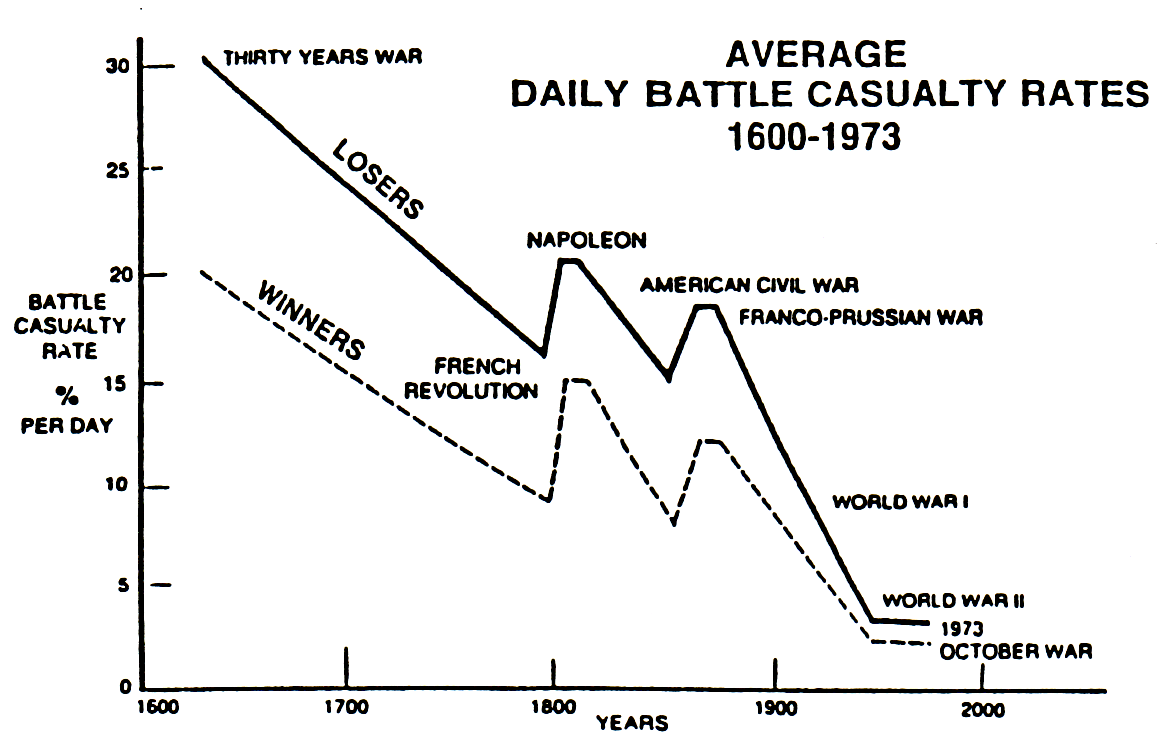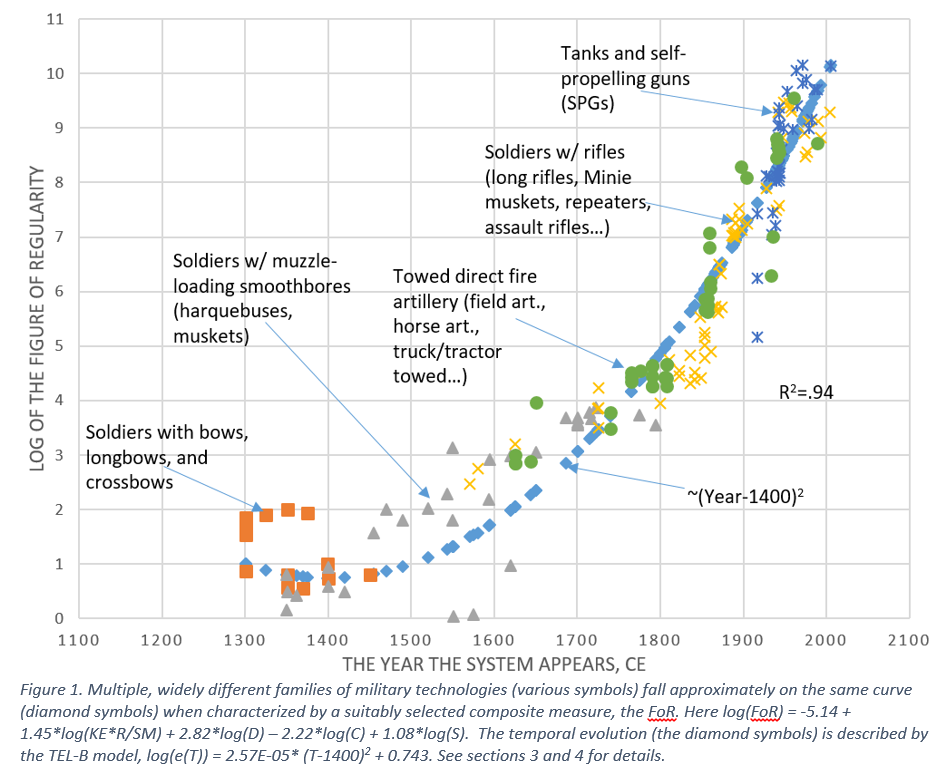While searching around the internet on discussions of lethality I found one my old forum posts from 2001. It is here: . http://www.dupuyinstitute.org/ubb/Forum1/HTML/000006.html
It was written in response to a question about the “cost/lethality ratio over time.” I think this post is worth repeating in its entirety, so let me post it here (with a few typos corrected):
I think this is a very important metric and one that the Institute has never been contracted to look into. To date, I have never seen any analysis that compares combat effectiveness, or lethality, to cost.
The Evolution of Weapons and Warfare was the start of a series of books that explored Trevor Dupuy’s combat models and theories of war. This book sets up the theoretical constructs behind his model. The book Numbers, Predictions and War actually discusses the first versions of the model (1977) and Understanding War (1987), which is Trevor Dupuy’s greatest book, discusses his theories of warfare. None of these address cost.
While a lot of people in the military don’t like to discuss cost, as a taxpayer, I think it is important. There are several issues here:
First, how does one measure combat effectiveness? While OLI’s (Operational Lethality Indexes) is one method, it is a scoring system for a model, and is really not intended for use as an analytical tool outside of the model. Beyond what are sometimes perjoratively refered to as “static measures” (scoring systems), there are several other more esoteric (more time consuming) ways of measuring combat effectiveness.
Second, how does one measure the synergistic effects of weapons systems? Meaning, just because weapon A is more cost effective per square meter of killing more than all other weapons, does not mean one should create an armed force of just one weapon. For example, the army of nothing but 155mm Howitzers does have severe limitations. There is a lot more that goes into weapon choice than just “bang for buck”.
Third, how does one measure the value of enabling systems? There is a lot of money spent on systems that do not shoot. This includes communications, support vehicles, engineering equipment, medical facilities, command facilities, transport, etc.
Fourth, how does one measure the value of logistic and supply support structure that backs up a military (including U.S. and forward basing)? This is also quite expensive.
Fifth, how does one measure the value and cost of personnel? The single largest cost in the U.S. defense budget is personnel. Is a $55,000 a year Captain 10% more combat effective than a $50,000 a year Captain? It includes retirement and benefits programs. Training cost is significant. What is the combat value of additional training, compared to the additional cost? The one thing our research continues to show is that the human factors are significant in military operations. Usually, the human factors are more significant than weapons or technology. If one is measuring the cost and contribution of weapons, then one also needs to measure the cost and contribution of human factors.
Sixth, what is the cost and combat value of morale building efforts? This includes housing for troops and families, recreational facilities and activities for troops and families, medical evacuation, family medical care, aid for disabled veterans and the Veterans Administration (VA), aid for widowed and orphaned families, national graveyards, Px priviledges, counciling, chaplains and ministers, USO shows, etc.
Seventh, what is the cost and combat advantage to intelligence efforts? This includes the DIA, CIA, NSA and even the DMA (Defense Mapping Agency). It also includes the various space and satillite efforts, spy planes, etc.
Eight, what is the cost and advantage of a “revolution” or further “evolution” of warfare (if there is one)?
Ninth, what is the cost and advantage of a unilateral advantage? For example, what is the combat (and political) advantage of the U.S. being able to bomb Afghanistan, Serbia/Kosovo, Iraq/Kuwait at will and relatively unmolested. This unilateral advantage is hard to measure with a simple “bang for bucks” measurment.
What you are asking is a very complex multi-faceted problem. Given sufficient time and analytical skills (and budget!!!), these issues can all be addressed to some extent. To date, I have not seen anyone try. I do not see how you are going to be able to adequently address the issues with the limited time frame, budget and page count of an Atlantic Monthly article.








